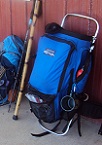ORIGINAL: cplprice
...During this crucial moment Longstreet stops and picnics on sweet potatoes, but Hood's doing a fine job. Hood is wounded and goes down. The Confederate assaults then become piecemeal instead of coordinated....
I've been following up on this line of thought, reading various accounts of the battle's second day. From what I've seen thus far, Longstreet performed well.
As we noted, Longstreet had command of the left wing of the Confederate army on Sept. 20. The right flank of his wing was the massive attack against the Union position at the Brotherton farm. In addition to his responsibilities there, Longstreet also had under his command Buckner's Corps further to the left.
After the Confederate attack pierced the Union MLR and wrought havoc on the Union center and right, Longstreet continued to command near the front lines. I read an account last night by an officer in an Alabama regiment that was in the Army of Tennessee, not Army of Northern Virginia, and he came across Longstreet near the front lines in conference with Buckner. The Alabamian noted that Longstreet didn't even seem to flinch as bullets and shells whizzed by.
I'm still looking into where Longstreet was on the 20th during the route of the Union right and the subsequent "last stand by Thomas" at Snodgrass Hill, but thus far it doesn't seem that Longstreet merited criticixm for his performance that day.
"Rats set fire to Mr. Cooper’s store in Fort Valley. No damage done." Columbus (Ga) Enquirer-Sun, October 2, 1880.







